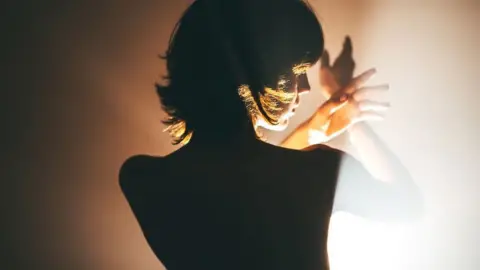Hardcore sex project funding axed by Creative Scotland
 Getty Images
Getty ImagesScotland's cultural funding body has cut support for an arts project involving real sex acts.
The Rein project was awarded £84,555 in January, through Creative Scotland and the National Lottery Open Fund.
The 45-minute art installation planned to pay people £270 per day to take part in sex acts.
Creative Scotland has now found the project breached its funding conditions as changes had been made without consultation.
It will also try to get back the money given to the project so far.
The move comes after heavy criticism from politicians and feminist groups.
The women's rights group For Women Scotland said the proposed project dehumanised women and promoted "unhealthy and dangerous" relationships.
A statement from Creative Scotland said: "Following a review of the application, assessment, and contractual agreement regarding the project Rein, Creative Scotland has made the decision to withdraw support for this project and will be seeking recovery of funding paid in respect of this award to date.
"What has emerged in the latest phase of the project represents a breach of the conditions of funding award, as the nature of the project has changed.
"The central role that 'non-simulated' sex acts now play in the project marks a significant change to the nature of the work presented in the original application which was assessed for funding," it added.
'Magical erotic journey'
Project director Leonie Rae Gasson is is based in Glasgow. Her website biography describes her as someone who "approaches her work from a queer and neurodivergent perspective."
A recruitment advert for Rein stated that actors must be over the age of 18 and asked for people with previous sex work experience to apply.
The project website said it would take audiences on a "magical, erotic journey through a distinctly Scottish landscape" and described it as ending with a secret cave sex party.
Creative Scotland said the Rein project announced the changes on its website without consultation with the agency.
It added: "Creative Scotland makes in the region of 2,000 funding awards each year. We support artists and projects across all art-forms, some of which are challenging in content, and push creative and social boundaries.
"However, Creative Scotland has important responsibilities to the public for the appropriate use of public funding, and, as recipients of that public funding, award recipients also have legal responsibilities as reflected in their funding contract."


If there's one thing guaranteed to grab the headlines, it's any project involving sex.
The art installation proposed by Rein wasn't due to happen till the autumn of 2025 but for a few days it was the most talked about art show in Scotland.
Creative Scotland must have trusted the judgement of established theatre director Leonie Rae Gasson in order to approve the second largest grant from the £800,000 open lottery fund.
Demand is greater than it's ever been, with the funding body receiving more than double the amount of projects it can support.
So it was clearly seen as a strong application.
What changed, then? Without seeing the original proposal, it's hard to compare. But the wording of Creative Scotland's statement is interesting.
A significant change they say is "the central role that non-simulated sex acts now play". Which suggests that real sex was still a part of the original application.
The changes to the project were revealed on Rein's website, itself a breach of funding regulations which say any media announcements have to be done with Creative Scotland's written approval.
Leonie Rae Gasson is an experienced theatre maker, who is unlikely to have misunderstood the rules around such a substantial grant. The grant application process is a laboured one and not a solo effort; so who was involved in agreeing the grant and overseeing the development of the project?
The whole episode is embarrassing and damaging for Creative Scotland, not least when it's in the midst of lobbying for greater support for the arts. It undermines that campaign and once again poses questions about their decision making processes.
It also diverts attention away from the very real issue of the squeeze on public arts funding.

